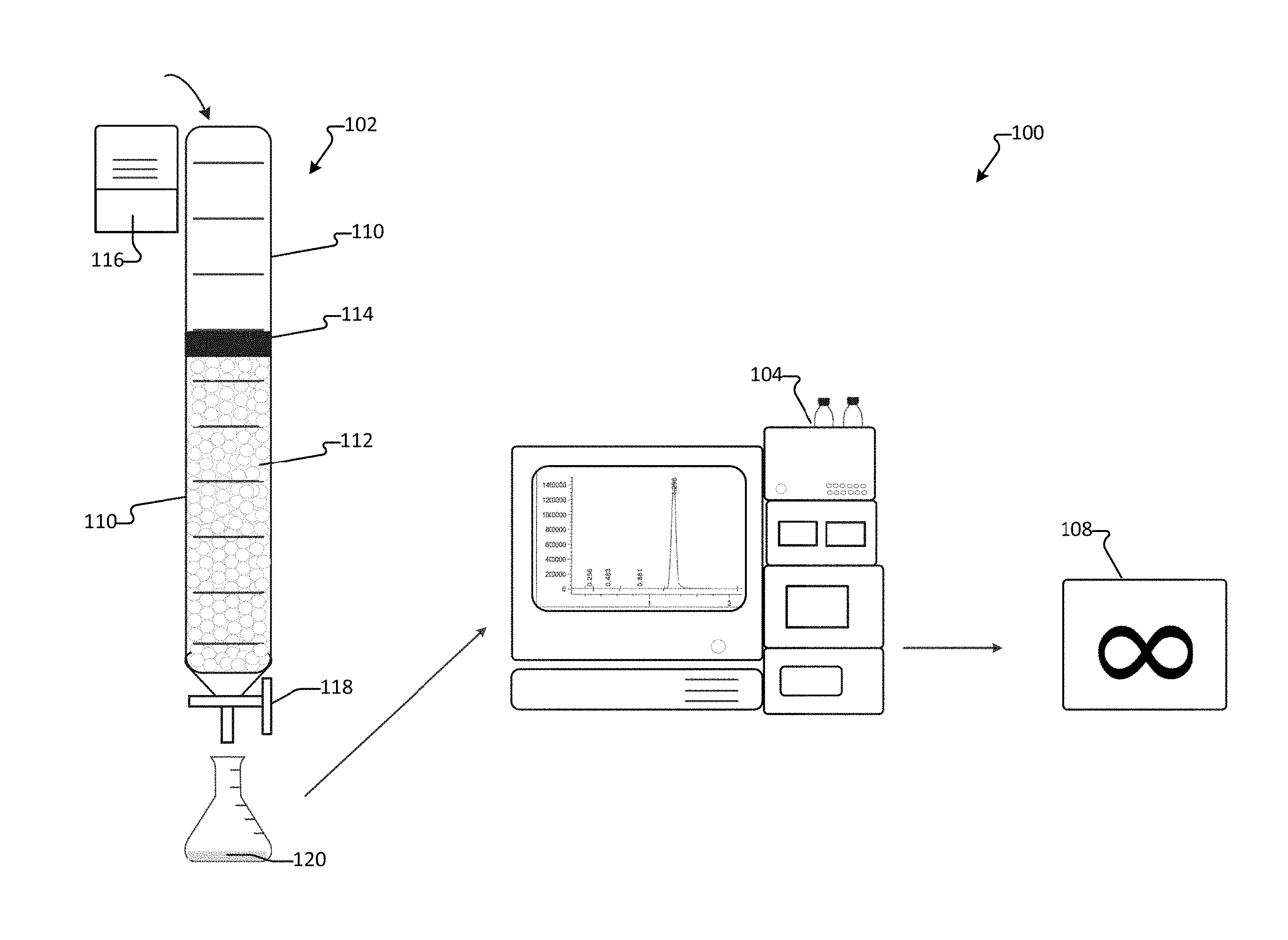U.S. Patent No. 10,239,808 B1 (‘808) issued on March 26, 2019, for “Cannabis Extracts.” It was issued to inventors Jacob Black of New Haven, Connecticut, Ryan Beigle of Littleton, Colorado, and Alex Mateo of Lakewood, Colorado. The applicant/assignee is Canopy Holdings, LLC of Littleton, Colorado, the food and agriculture company (not to confused with the large Canadian cannabis company, Canopy Growth Corp., which was the subject of recent media attention when it will acquire rights to a U.S.-based cannabis company, Acreage Holdings).
Figure 1 illustrates the claimed invention:

The ‘808 patent discloses new methods and systems to extract compounds from raw cannabis oil. The novelty of the claimed invention goes to the method of using liquid chromatography for extraction, as opposed to the traditional CO2 extraction or liquid-solid solvent extraction methods. The claims are directed to the methods of extraction, with the specific goal to produce a substance of less than 0.3 wt % of Δ9-tetrahydrocannabinol (THC).
The Cooperative Patent Classifications are C07C (acyclic or carbocyclic compounds, namely processes comprising liquid-liquid treatment, and compounds having at least one hydroxy or O-metal group bound to a carbon atom of a six-membered aromatic ring, namely, polycyclic, containing sex-membered aromatic rings and other rings, with unsaturation outside the aromatic rings); and A61K (preparations for medical, dental, or toilet purposes, namely, medicinal preparations or undetermined constitution containing traditional herbal medicines, namely, magnoliopsida); B01D (separation, namely, separation processes involving treatment of liquids with solid sorbents, namely, bonded phase chromatography); and C07B (general methods of organic chemistry, namely, purification, separation, stabilization, and use of additives).
Please contact Yonaxis for more information on any of the IP processes described in this posting if you have any questions.
